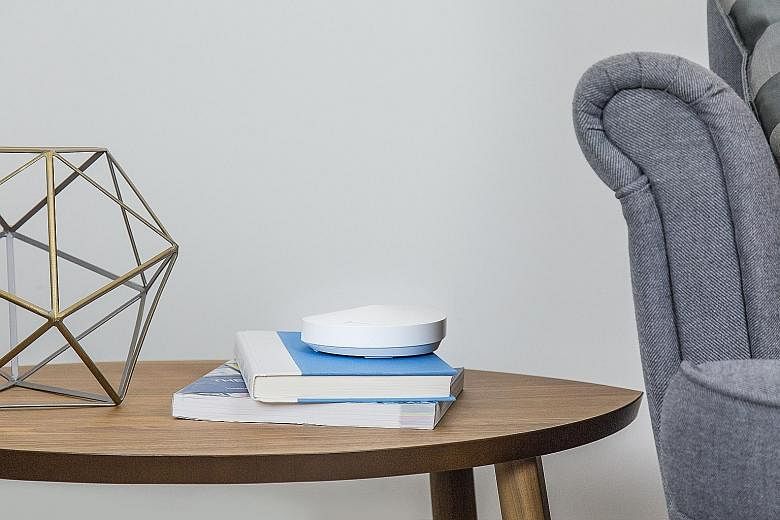The TP-Link Deco M5 whole- home Wi-Fi system is the latest entrant in an increasingly crowded segment.
Such a system usually uses multiple routers (called mesh routers), instead of just one, to propagate wireless signals throughout the home, extending Wi-Fi coverage and removing blind spots.
Perhaps to make up for its late start, TP-Link has priced the Deco aggressively.
A set of three units offering Wi-Fi coverage up to 4,500 sq feet (418 sq m) is selling at $459, compared with around $600 for a similar bundle from its competitors.
Only the Google Wifi ($360) and the D-Link Covr systems ($369) are more affordable, but they come with caveats. Google Wifi is available only with a StarHub broadband plan while the D-Link Covr is more of a glorified router and range extender bundle with a lacklustre companion app.
Pricing aside, the Deco impressed me with its refined interface and ease of use. Like many of its rivals, the Deco has no Web interface - a smartphone app (available for iOS and Android) is used to set up and control the devices.
It has a decent set of features for a mesh router, which typically has fewer features than a regular router. It has parental controls, network traffic prioritisation, guest networks and port forwarding. It even has support for Amazon Alexa and IFTTT (If This Then That) for Internet of Things devices.
-
TECH SPECS
-
PRICE: $459
ETHERNET INTERFACE: 2 x 10/100/1,000 Gigabit LAN
STANDARDS: 802.11a/b/g/n/ac
SECURITY: WPA2, NAT
RATING
FEATURES: 4/5
DESIGN: 4/5
PERFORMANCE: 3/5
VALUE FOR MONEY: 4/5
OVERALL: 4/5
The Deco itself is a small white disc with a tiny LED at the top and two Gigabit ports at the side. All the units are identical, so you can daisy chain the wireless connection from one unit to another.
If you prefer to use your own router, the Deco can also work in bridge mode to extend the router's network.
Like the Asus Lyra, the Deco comes with built-in malware and anti-virus protection from Trend Micro (free for three years). However, the Trend Micro software appears to exact a toll on performance. With this feature enabled, the Deco's average download speeds was a paltry 155Mbps. This figure jumped to a more respectable 313Mbps when it was turned off.
It was still slower than the 432Mbps achieved by the Google Wifi, but at least it was within the 300 to 400Mbps range typically observed in other mesh routers.
Unlike more expensive mesh routers, the dual-band Deco lacks a dedicated wireless channel for communication between the units, though if your home is wired for Ethernet, it supports wired backhaul.
The lack of a wireless backhaul leads to signal loss and lower speeds at the edge of the network. In my testing, the Deco's download speed was around 119Mbps in my bedroom, compared with the Linksys Velop's 183Mbps. The latter had a wireless backhaul.
• It may not be the fastest mesh router in the market, but the Deco is attractively priced with a good set of features.


